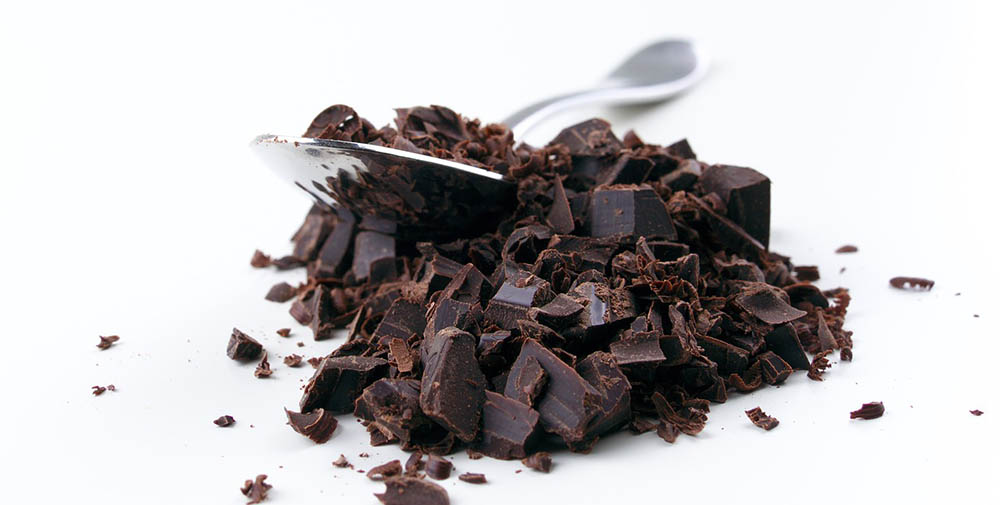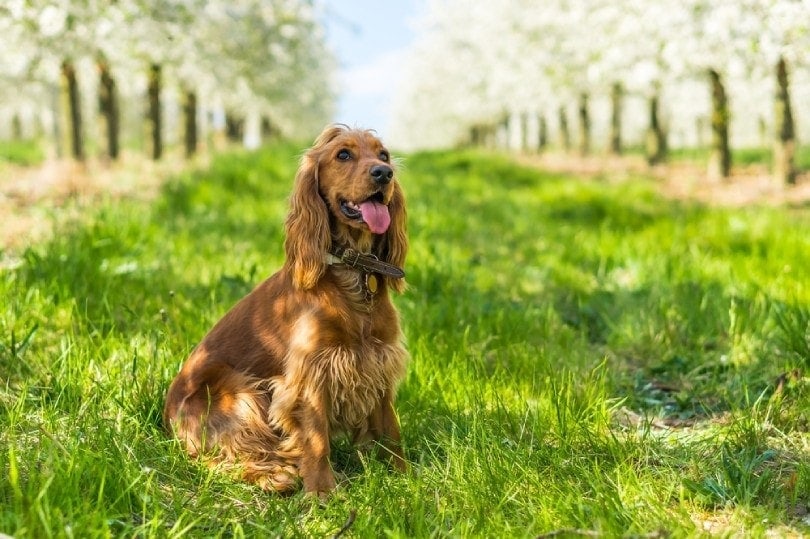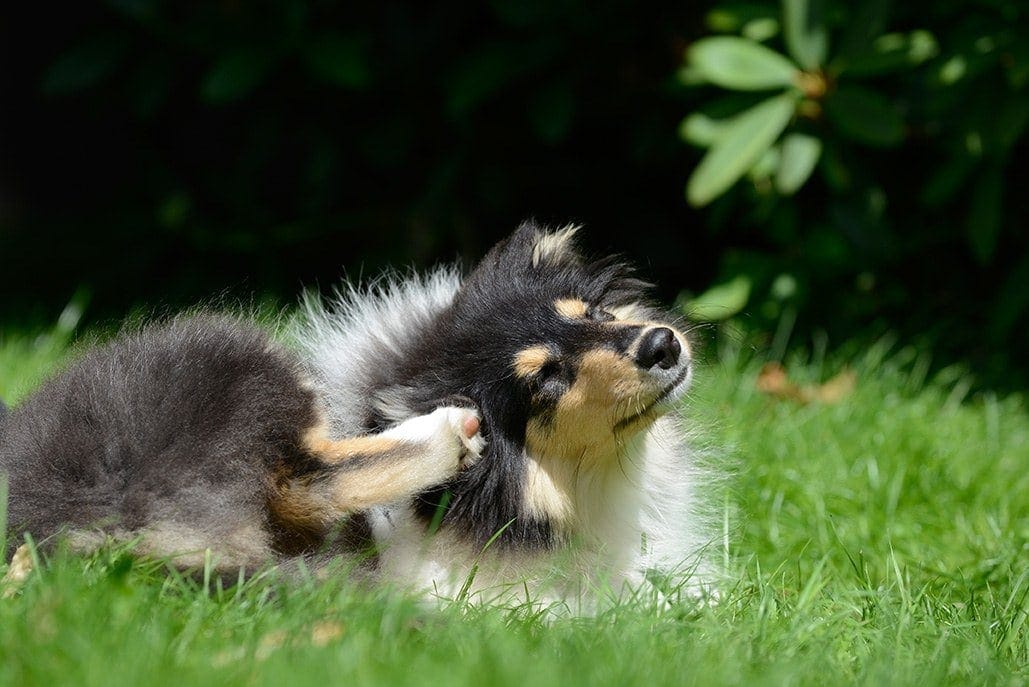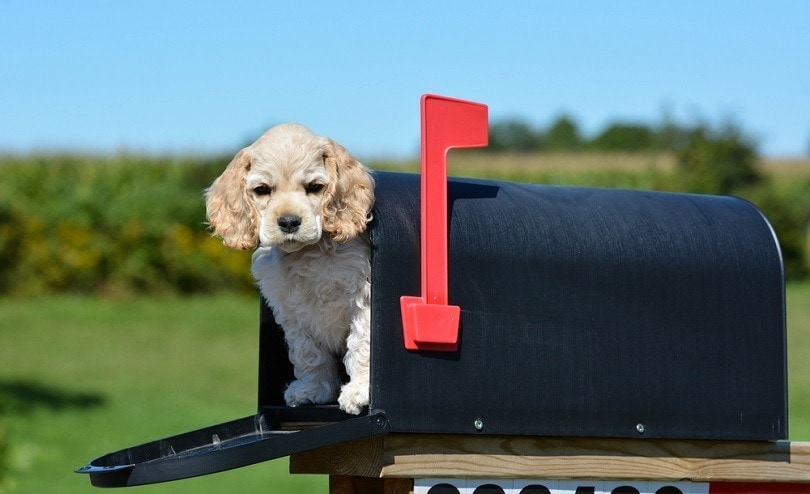Height:
6 – 9 inches
Weight:
3.3 – 6.6 pounds
Lifespan:
12 – 20 years
Colors:
Black, brown, cream, fawn, red, blue, gold, silver, black and tan, brown and tan, fawn and white
Suitable for:
Companionship, small apartments, families
Temperament:
Loyal, intelligent, confident, charming
The Chihuahua is a balanced and graceful toy breed that should weigh no more than six pounds. It has a rounded apple-shaped head with erect pointy ears. It moves swiftly and has a temperament and behavior that’s similar to a Terrier. Its eyes are round and set somewhat far apart and can be light-colored or blue in some dogs. The nose can also change color in lighter coats, or it will be black. The tail is moderately long and shaped like a sickle.
The Chihuahua is an adaptable dog breed that is well suited to almost any environment. It enjoys indoor apartments as well as running around outside. They must be indoor dogs and are sometimes intimidated and frightened by larger animals. It can also stay frightened for a long time if yelled at or scolded, and it is extremely sensitive to cold.
 Chihuahua Dog Puppies – What You Should Know Before You Buy…
Chihuahua Dog Puppies – What You Should Know Before You Buy…
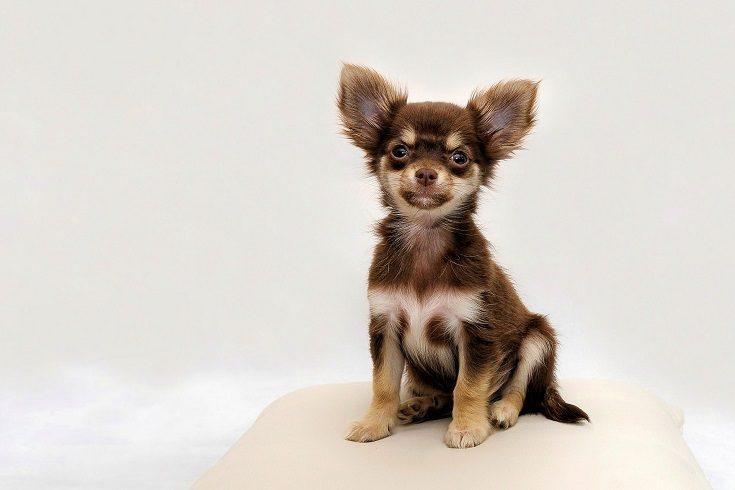
How Much Do Chihuahua Dog Puppies Cost?
The Chihuahua usually cost between $500 and $1500 depending on the breeder and what tests the breeder may have performed. Breeders may test your pet for genetic problems that can cause health issues later in life, and many can cost hundreds of dollars. You can find many high-quality breeders that can deliver you a healthy puppy. You can often find Chihuahuas in animal shelters at a significantly reduced cost.
You may also need to get your dog fixed and possibly micro-chipped, which can add to the cost of purchase. You will need to purchase food, treats, and toys, along with flea and tick medication. Accessories that you may need to purchase include a collar, leash, and possibly a crate. These extra costs can add up over the considerable lifetime of your pet and are worth considering beforehand.
3 Little-Known Facts About the Chihuahua
1. You can find pictures resembling the modern Chihuahua in ancient Mexican artwork.
2. The Chihuahua is a pack dog and enjoys the company of other Chihuahuas.
3. The Chihuahua is the smallest dog breed in the world.
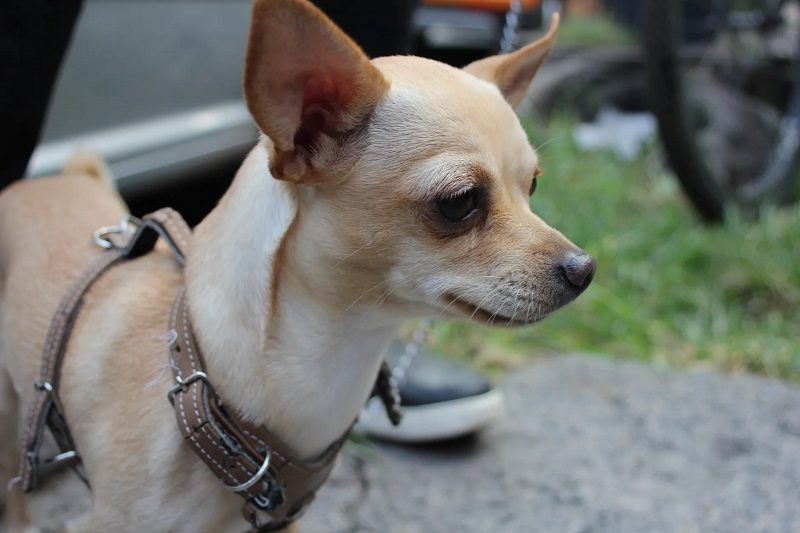
Temperament & Intelligence of the Chihuahua
Owners and breeders usually describe the Chihuahua as having the temperament and behavior of a Terrier. It is extremely alert and watchful, making this breed an excellent watchdog despite its small size. They are very sensitive and easily upset if scolded or treated meanly by people or other animals, and it can take them a long time for them to forgive and forget. The Chihuahua is timid and needs plenty of early socialization to get used to people and other pets, as well as loud noises and other things that might scare or intimidate it.
The Chihuahua is an intelligent animal that is easy to train and learns quickly. They can become bored easily if not continuously mentally stimulated, and if that happens, they often misbehave and can even become destructive. This breed is easy to housetrain and is happiest in the company of others.
Are These Dogs Good for Families?
The Chihuahua is great for families that don’t have any children younger than eight years old. The reason you cannot keep small children or toddlers around this breed is that the Chihuahua is small and fragile. It can easily be hurt unintentionally by a child while playing. Children aside, this breed enjoys being part of the family and does not like to be left on its own. It enjoys large homes and is also much more suited to compact city apartments than most other breeds.
Does This Breed Get Along with Other Pets?
The Chihuahua can get along fine with other pets if they are socialized early. Not properly socializing them will cause them to be more cautious around strange animals, except for other dogs of the same breed. However, in most cases, after a short introductory period, the Chihuahua will take to making friends unless the other party is aggressive during the introductory period. Many professional owners and breeders highly recommend doggy kindergarten and obedience classes to help with many of the issues dealing with socialization.
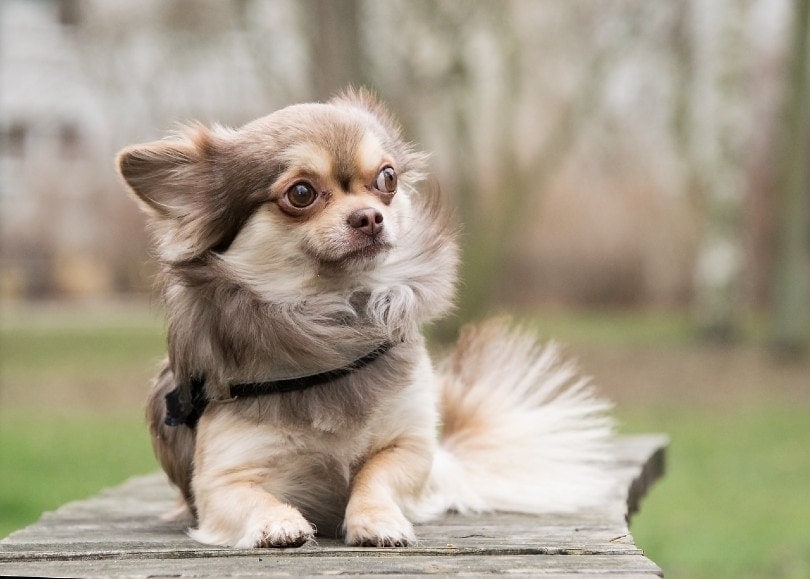
 Things to Know When Owning a Chihuahua
Things to Know When Owning a Chihuahua
Here is a short list of things you should consider before you purchase a Chihuahua.
Food and Diet Requirements
Since the Chihuahua is such a small dog, the food cost when compared to other breeds is minimal. In many cases, a cat will eat more food. Exactly how much food the dog requires will depend on its size as well as its age. Well-balanced dry dog food is usually the best option, but it’s very sensitive to chemicals, including artificial colors and preservatives. We recommend choosing a food that has lean meat, like chicken, lamb, turkey, or beef listed as its first ingredient. We also recommend foods fortified with antioxidants, probiotics, and omega fatty acids. Once you have found the brand you want, follow the directions on the package for feeding. Usually, a full-grown Chihuahua will eat between ¼ and ½-cup of food per day spread out over two or three meals.
While most veterinarians recommend a high-quality dry kibble as the main food source for your pet, it can be a great idea to home cook your dog treats. Home-cooked treats will not have the questionable ingredients that can lead to weight gain or allergic reactions found in many store-bought treats. If you are interested in cooking home-cooked treats for your pet, we recommend picking up a dog treat cookbook so that you have plenty of options to work with, as many Chihuahua are finicky eaters.
Daily Exercise Requirements
The Chihuahua is an amazingly active dog for its size, and it refuses to give up or stop to take a break. You will need to be the one to stop and take a break, or the dog will run until it drops, which can cause hyperventilating and other issues. In most cases, running around after you in your home will usually provide enough exercise for this breed, but you may opt for a short walk if they seem to rambunctious in the home after hours.
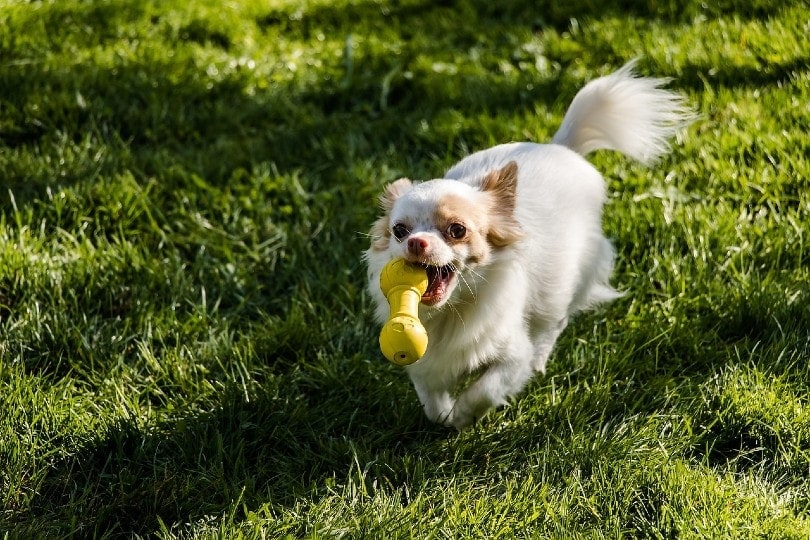
Training
With plenty of patience and enthusiasm, the Chihuahua is easy to train. While training, it’s important to stay consistent. Doing the same routine each day will help lock the training into the pet’s long-term memory where it will remain. Training occasionally or inconsistently will be much less effective. It will take considerably longer for your pet to follow commands, and you may never achieve the desired results.
Using treats and a lot of praise is the best and fastest way to teach your pet a new trick. Once they see they are making you happy, they will work very hard to follow your commands. After they start getting the nack for the command, you can begin to phase out the treats to prevent weight gain.
- Related Read: How to Potty Train a Chihuahua (5 Quick & Easy Steps)
Grooming ✂️
A Chihuahua is available in a short coat or a long coat. Each coat requires a moderate amount of grooming. The short hair coat will require brushing at least once a week that includes the underside of the body as well as the legs. The long hair coats will require brushing at least three times a week and tend to develop tangles that need constant attention and may require trimming. You may be able to prevent tangles by brushing first and then combing through with a detangling product.
- Feeling adventurous? Try one of these adorable haircut ideas!
- Looking for a clean-up? How about one of these top-rated shampoos?
Health and Conditions
Purebred dogs like the Chihuahua are more prone to genetic disorders than many mixed breeds because breeders can selectively breed out known problems. While the Chihuahua has a long lifespan, there are several health problems that we will discuss in this section.
- Tooth and gum disease
- Hydrocephalus
- Luxating patella
- Hypoglycemia
- Tracheal collapse
Major conditions:
The Major Conditions can be life-threatening or something less serious that occurs commonly.
Luxating Patella
Luxating patella is a dislocated kneecap that occurs more and more as the dog ages. If your Chihuahua has this condition, you may notice a limp, or the dog may try to avoid using the leg at all. It may also hold the leg in the air, which can help ease the joint back into place. The dog does not seem to suffer from too much pain with this condition, and in extreme cases, surgery may help.
Hypoglycemia
Hypoglycemia is a term used to describe low blood sugar. If your pet seems weak or disoriented, it can be a sign of hypoglycemia. It may also seem tired and might even lose consciousness in some cases. Hypoglycemia can be a sign of a more serious disease like diabetes or liver disease, so it’s important to take your dog to the vet immediately if you notice these symptoms. It’s best to make sure you don’t miss any meals if your pet is prone to hypoglycemia.
Tracheal Collapse
Tracheal collapse is a condition that tightens the windpipe of your Chihuahua, causing difficulty breathing, usually accompanied by a honking cough. If too much air gets blocked, you may notice their gums turn blue, and they are at risk for fainting. A collapsed trachea is fairly common, and if you can get them to the vet quickly, they can often repair the condition and give a good prognosis. You may also need to follow up with cough suppressants or steroids.
Minor conditions:
Minor conditions are those that rarely occur or present little danger to your pet’s health.
Tooth and Gum Disease
Many small breeds like the Chihuahua are predisposed to overcrowded teeth. These crowded teeth can be extremely hard to clean, which can result in the plaque and tartar build-up that causes tooth decay and gum disease. Making sure to be vigilant about brushing your pet’s teeth every day along with a supply of teeth cleaning dental chews can help reduce the amount of food trapped in the teeth keeping the gums healthier.
Hydrocephalus
The Molera is the soft spot on a Chihuahuas head very similar to the soft spot found on a baby’s head when it’s born. If the soft spot on your Chihuahuas head is larger than usual, spinal fluid can surround the brain and result in the condition known as Hydrocephalus. Hydrocephalus can cause numerous neurological disorders and may also cause seizures and a swollen head. While there is no treatment for this disorder, many dogs can continue to live a full life.
 Male vs Female
Male vs Female
There is very little difference between the male and the female once you get them fixed. However, there are quite a few differences between them otherwise. The males tend to have a dominant personality and will often try to rule the house and everyone in it. They often mark their territory inside and outside of the home. They are also prone to running off, which can be dangerous because they are easy prey to many predators. Male Chihuahuas are also known for humping anything it can find.
Unfixed, the female Chihuahua is much more tolerable, but she’s known for dramatic and sudden mood swings. The female may also become withdrawn, but these symptoms tend to come and go along with her heat cycle.
 Summary
Summary
The Chihuahua is an excellent pet for anyone that lives in cramped quarters or a city. It’s an extremely energetic dog, but you can often burn up the energy by playing games right in the home. These dogs aren’t advised for anyone with small children because they are very fragile and easily hurt. Early socialization is best for large families or families with other pets.
We hope that you have enjoyed this quick look at the world’s smallest dog and have decided to look into purchasing one for your home.
Featured Image Credit: liggraphy, Pixabay

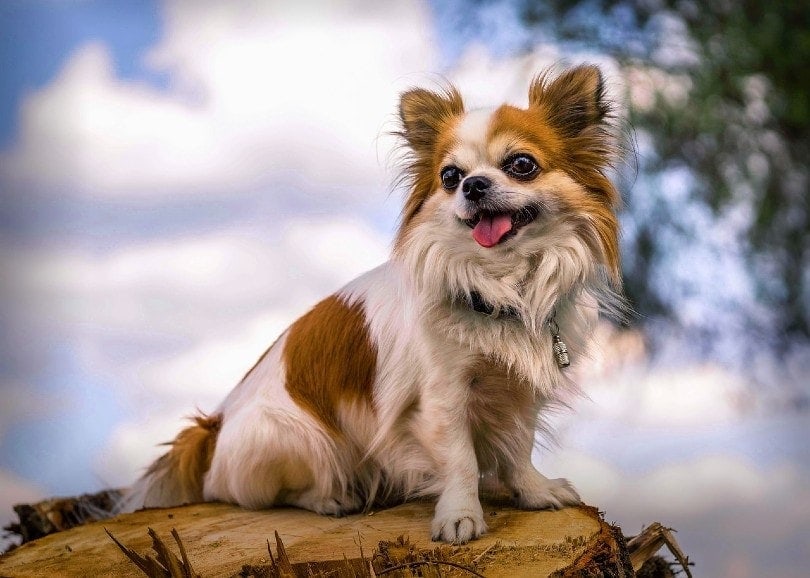
 Chihuahua Dog Puppies – What You Should Know Before You Buy…
Chihuahua Dog Puppies – What You Should Know Before You Buy…
 Things to Know When Owning a Chihuahua
Things to Know When Owning a Chihuahua Male vs Female
Male vs Female Summary
Summary